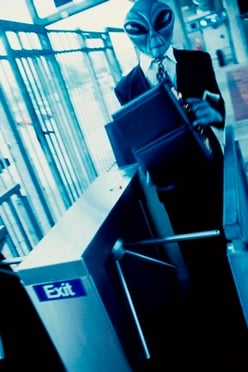PDG has published a new case study focused on building the next generation of corporate leaders. Failure rate for new managers can be over 50% in the first year. Clearly, getting managers off to a good start is critical to their future effectiveness. Ineffective onboarding can do more harm than good, and do little more than drive up training costs. So what is the best way to prepare new managers for their jobs?
 Here's a preview of the case study:
Here's a preview of the case study:
Improving Time to Impact: Onboarding New Leaders
Hiring top talent is only half the battle. Getting those people prepared for the challenges ahead is perhaps the larger challenge. In the highly competitive world of finance, “good enough” is never good enough. How do you get new leaders ready to make an impact?
This was the challenge facing a major Financial Services Institution, struggling to prepare new Retail Banking managers for success. Despite having a comprehensive curriculum, the organization was not getting where it needed to be. New managers attended extensive training with a blended approach of self-paced web training and instructor-led classes. Yet, at completion, new managers were not prepared to do their jobs; they had difficulty completing basic procedures. The learning team admitted that individuals might “complete” training but not retain the information. Corporate training was treated as a “check-the-box” exercise, and “real” training happened at branch.
Clearly, something needed to be done. The branches were struggling with client satisfaction issues, talent retention, and lagging sales. The cost of training was escalating, the time to efficiency was increasing, and consistency across the branches was in jeopardy. As a result, the business was losing respect for training and was more reluctant to participate in the corporate program. What could be done to bring this new manager program back on track?
Read more about how this financial services institution was able to prepare their new managers for success in the case study, Improving Time to Impact: Onboarding New Leaders.




 I recently attended Performance Development Group’s Performance Consulting Workshop, and found it full of valuable information. I work in a marketing role at PDG, but I thought the information I learned at this workshop would be helpful to our customers and others in the field. So here’s a taste of the insight I gained from the PDG performance consultants.
I recently attended Performance Development Group’s Performance Consulting Workshop, and found it full of valuable information. I work in a marketing role at PDG, but I thought the information I learned at this workshop would be helpful to our customers and others in the field. So here’s a taste of the insight I gained from the PDG performance consultants.
 ne answer to all of our problems. After all, nobody wants their doctor checking Google on their iPad during surgery to determine where the liver is located. Performance Support works best when there is a base level of knowledge present, but there is knowledge necessary that:
ne answer to all of our problems. After all, nobody wants their doctor checking Google on their iPad during surgery to determine where the liver is located. Performance Support works best when there is a base level of knowledge present, but there is knowledge necessary that:



 software
software  In the first part of this series, we talked about the role of the individual in learning. It’s hard to make someone learn if they’re not willing. But what if they are willing but are not encouraged or worse are discouraged by the person who judges their performance: their manager? What is the manager’ attitude toward the new knowledge and skills learned?
In the first part of this series, we talked about the role of the individual in learning. It’s hard to make someone learn if they’re not willing. But what if they are willing but are not encouraged or worse are discouraged by the person who judges their performance: their manager? What is the manager’ attitude toward the new knowledge and skills learned? Challenge 1: How does this relate to me? Can you recall a time when you were totally uninterested and unmotivated to learn? Maybe in grade school during history class? For me it was college math. I simply was not interested. Why? I did not ever think calculus was something I would use in “real life.”We know from adult learning principles that people learn best when they can see the relevance the content has to their day-to-day jobs, and to their lives. So, one would think the answer is simple: show people how the content is relevant to them, and they will be open to learning it. As important as this concept is, it’s something designers forget to do as they get all caught up in designing the learning.
Challenge 1: How does this relate to me? Can you recall a time when you were totally uninterested and unmotivated to learn? Maybe in grade school during history class? For me it was college math. I simply was not interested. Why? I did not ever think calculus was something I would use in “real life.”We know from adult learning principles that people learn best when they can see the relevance the content has to their day-to-day jobs, and to their lives. So, one would think the answer is simple: show people how the content is relevant to them, and they will be open to learning it. As important as this concept is, it’s something designers forget to do as they get all caught up in designing the learning.  We have all heard of corporate agility. We hear the term “agile” all the time related to today’s corporate environment: agile processes, agile practices, agile leadership. In our rapidly changing world, agility is one of the most important skills an organization can have if it is to stay competitive. Agility is the ability to move quickly, change rapidly, and respond to crises, threats and opportunities at the point of need. Of course, the ability to be agile relies on the ability of the organization to quickly gain the knowledge they need to do so. Rapid access to knowledge and information drives the learning agile organization, as defined by Clark and Gottfredson in
We have all heard of corporate agility. We hear the term “agile” all the time related to today’s corporate environment: agile processes, agile practices, agile leadership. In our rapidly changing world, agility is one of the most important skills an organization can have if it is to stay competitive. Agility is the ability to move quickly, change rapidly, and respond to crises, threats and opportunities at the point of need. Of course, the ability to be agile relies on the ability of the organization to quickly gain the knowledge they need to do so. Rapid access to knowledge and information drives the learning agile organization, as defined by Clark and Gottfredson in  Imagine going out and buying a shiny new sports car. Now imagine hitching up a horse to it, and having the horse drag your car to work every day.
Imagine going out and buying a shiny new sports car. Now imagine hitching up a horse to it, and having the horse drag your car to work every day.
